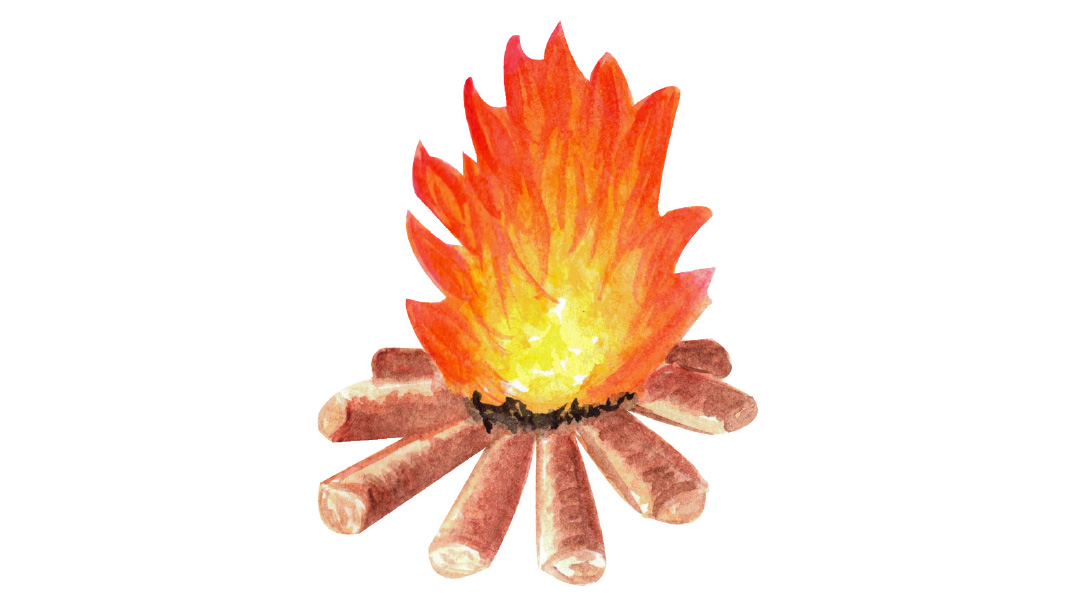Days of Transformation
| April 18, 2023Is Sefiras Ha'omer a time of blessing, or a time of curse? The answer is, it depends — on us
The days of Sefiras Ha’omer serve as the bridge between two seminal holidays — Pesach and Shavuos. And although days of joy stand at its two bookends, the days of Sefirah themselves are marked with tragedy. So what, in fact, is the true nature of these weeks? Are they a time of blessing, or a time of curse? The answer is, it depends — on us.
1
The Rambam (hilchos Temidin Umusafin 7:25) writes that, prior to counting the Omer, one must recite the brachah, asher kideshanu… al Sefiras Ha’omer. The Rambam continues, “If one forgets to make the brachah, he is still yotzei.” This is a curious comment for the Rambam to make since we have a general rule that “brachos einan me’akvos” — which means that although one is required to recite the established brachah prior to performing a mitzvah, failure to recite that brachah would not render that mitzvah invalid. Since this rule is applicable to all mitzvos, it seems strange that the Rambam would choose to emphasize this principle specifically regarding the mitzvah of Sefiras Ha’omer.
2
The truth is that we actually do find an opinion in the Rishonim that would appear to suggest that when it comes to Sefiras Ha’omer, the relationship between the mitzvah and its preceding brachah is critical. The Machzor Vitri (a student of Rashi), cited by Avudraham, writes that if one davens Maariv prior to tzeis hakochavim, he may count the Omer without a brachah. Later, after tzeis hakochavim, he may repeat Sefiras Ha’omer along with a brachah (see Gra, siman 489:2 for his understanding of this opinion). We do not find a parallel to this concept in any other mitzvah. For all other mitzvos the rule is that if one accidentally forgets to recite the brachah prior to the performance of a mitzvah, he may no longer recite the brachah. Yet, at least according to the Machzor Vitri, it seems that Sefiras Ha’omer is the one exception to this rule. Why is it that, regarding Sefiras Ha’omer specifically, the brachah is so intrinsically linked to the mitzvah?
3
Rav Moshe Shapiro (Afikei Mayim, Sefiras Ha’omer) presents a very deep idea to answer this question. During the days of Sefiras Ha’omer, writes Rav Shapiro, we mourn the loss of Rabi Akiva’s 24,000 students. Several of the great mekubalim, including the Megaleh Amukos (Ofan 88), and the Rema MiPanu (Gilgulei Neshamos), reveal that these 24,000 students were reincarnations of the 24,000 members of the tribe of Shimon who died following the episode of Zimri and Kozbi.
The pandemic that swept through the tribe of Shimon was the tragic ending of what began as Bilaam’s advice to Balak, king of Moav. Bilaam had advised Balak to send the daughters of Midyan on a mission to seduce Bnei Yisrael to sin. They succeeded in this mission, ultimately wiping out a large portion of Shevet Shimon as a result. Rabi Akiva’s students were somehow charged with the mission of rectifying the failure of Shevet Shimon.
And while it is true that the Gemara tells us that the fault they were guilty of was “shelo nahagu kavod zeh ba'zeh” — that they did not properly respect one another, the mystical tradition extends their transgression further back in history, and far beyond what meets the eye. Somehow, the students of Rabi Akiva failed to remedy the harm done when the tribe of Shimon succumbed to sin with the daughters of Midyan. This resulted in their tragic passing, which transpired specifically during the 49 days of Sefirah.
How do we understand this, and what is its relevance to the days of Sefirah?
4
Rav Shapiro then points to the Arizal (Shaar Hapesukim, parshas Vayeira) who teaches that the gematria of Moav is 49. The number 49 represents the totality of creation. From a Torah perspective, all of creation exists within the realm of seven — there are seven days of the week, seven years of shemittah, seven cycles of shemittah in Yovel, and so on. The number 49, which is 7 times 7, is the totality of all of creation. In Parshas Bechukosai, we find 49 curses. This is because the ultimate curse affects all 49 components of creation.
Moav, which is also gematria 49, relates to this all-encompassing power of curse. In fact, Moav descends from Lot. The Shelah Hakadosh (parshas Lech Lecha) writes that the word “Lot” means “curse” in Aramaic. The secret behind Bilaam’s advice to Balak was to force Bnei Yisrael to crumble beneath the weight of Moav’s power of curse.
Shevet Shimon, in particular, fell into this trap. They sinned with the Midianite daughters who were enlisted by Moav and contracted the full force of the curse Moav represents. The students of Rabi Akiva were endowed with the ability to transform this curse into blessing. Rather than 49 measures of klalah, it would have become 49 measures of brachah. However, they failed to do so.
And so, during these 49 days of Sefirah, they, too, were punished with death. What emerges from all this is that the primary focus of the days of Sefirah is to transform curse into blessing. Rav Moshe Shapiro says that with this idea we can understand why we find, from the language of both the Rambam and the Machzor Vitri, that the blessing on Sefiras Ha’omer is an inherent part of the mitzvah of counting the Omer. For these 49 days are all about transforming klalah into brachah.
Rabbi Daniel Glatstein is the mara d'asra of Kehilas Tiferes Mordechai in Cedarhurst, NY, and author of numerous seforim in Lashon Hakodesh and in English for ArtScroll. He is an international lecturer and maggid shiur. His thousands of recorded shiurim are available on Torahanytime.com, podcast, his website rabbidg.com, and other venues.
(Originally featured in Mishpacha, Issue 957)
Oops! We could not locate your form.







